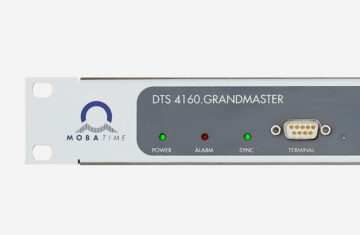As a rule, NTP clients send a request packet every 64 seconds at most. With a device code of 100 “requests per second”, 6,400 NTP clients could already be synchronized in the network. For example, if you use the DTS 4160 time server with 10,000 “requests per second”, there are even 640,000 clients that could be synchronized with this type of time server in the network. Since more current NTP versions increase the polling interval by a factor of 16 with stable time synchronization, this results in an even greater number of possible NTP end devices. One should therefore take this fact into account when selecting the device specification that is really necessary for the specific need. For larger networks, it is also common that hierarchical time server structures – consisting of several network segments or levels, each with an assigned time server – are created. In this way, the time servers of the lower level always synchronize to the higher level right down to the central time server. This central time server typically has the highest performance features and is often redundant.
